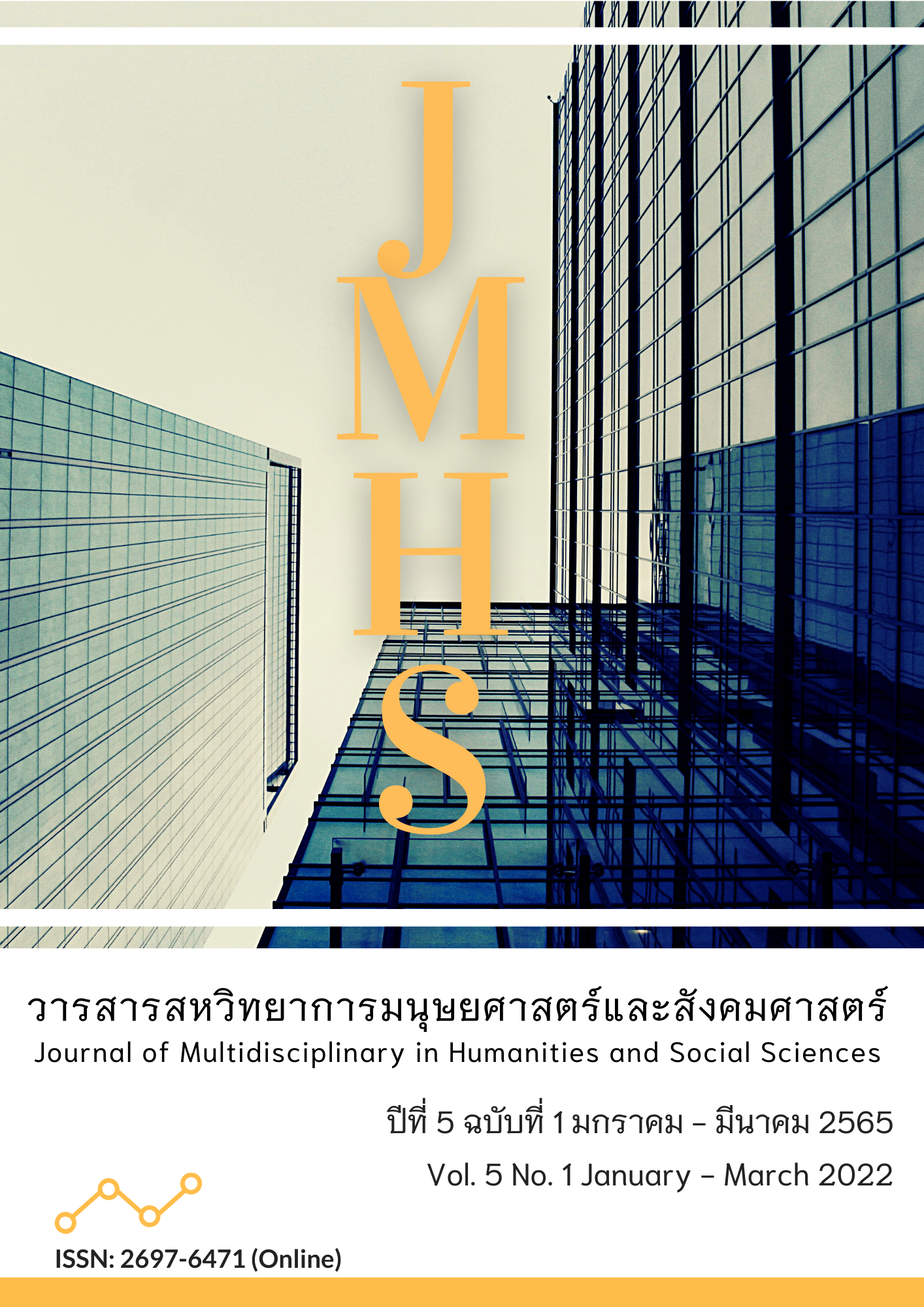The Guideline of Insight Meditation Practice Based on 4 Pamanika: A Case Study of Vipassana Village Center, Phuket Province
Main Article Content
Abstract
This article is intended to study 1) the practice of vipassana meditation in the Theravada Buddhist scriptures; 2) the 4 principles of Pamanika in the Theravada Buddhist scriptures; and 3) the guidelines for the practice of vipassana meditation according to the 4 principles of Pamanika: a case study of the practice center in Vipassana Village, Phuket Province. This study was documentary research. The results of the research showed that 1. The practice of Vipassana meditation in the Theravada Buddhist scriptures is divided into the meaning of Vipassana, meaning insight; 2. It sees the truth of the Dharma and Wisdom that sees the trinity, which allows for the removal of delusions and misunderstandings in the body. The training of wisdom to achieve the enlightenment of things as they are. Meditation means frequent practice when two words are combined to form introspection. Meditation means continuous practice. In the training of wisdom, which is a destroyer of passion, to give an opinion, knowing things exactly according to their state, understanding them as they really are themselves, not seeing them as we imagined, concocting them with preference, introspection is the form-noun that binds the mind to practice. Vipassana Bhavana Vipassana Meditation is called Vipassana meditation; and 3. Vipassana Meditation Practice at the Vipassana Village Vipassana Practice Center, Phuket. The teaching style and process have been applied to make it easier to follow the Four Foundations of Mindfulness with the aim of maximizing the benefit of the practitioners’ being able to abandon defilements for the release of suffering. Access to the Path and Nirvana for the present benefits arising from practice and applying them in daily life.
Article Details

This work is licensed under a Creative Commons Attribution-NonCommercial-NoDerivatives 4.0 International License.
Views and opinions appearing in the Journal it is the responsibility of the author of the article, and does not constitute the view and responsibility of the editorial team.
References
ชัยชาญ ศรีหานู. (2564). วิเคราะห์คำสอนวิปัสสนาในเตภูมิกถาที่มีผลต่อคตินิยมเชิงพุทธในสังคมไทย. วารสาร มจร บาฬีศึกษาพุทธโฆสปริทรรศน์, 7(1), 12-26.
พระพรหมคุณาภรณ์ (ป.อ.ปยุตโต). (2554). พจนานุกรมพุทธศาสตร์ ฉบับประมวลธรรม. (พิมพ์ครั้งที่ 34). นนทบุรี: เอส.อาร์ พริ้นติ้ง แมสโปรดักส์.
พระพุทธโฆสเถระ. (2554). คัมภีร์วิสุทธิมรรค. (สมเด็จพระพุฒาจารย์ (อาจ อาสภมหาเถร), แปล). (พิมพ์ครั้งที่ 10). กรุงเทพฯ: ธนาเพรส.
มหาจุฬาลงกรณราชวิทยาลัย. (2539). พระไตรปิฎกภาษาไทยฉบับมหาจุฬาลงกรณราชวิทยาลัย. กรุงเทพฯ: โรงพิมพ์มหาจุฬาลงกรณราชวิทยาลัย.
สมเด็จพระพุทธโฆษาจารย์ (ป.อ.ปยุตฺโต). (2561). พจนานุกรมพุทธศาสน์ ฉบับประมวลศัพท์. (พิมพ์ครั้งที่ 31). กรุงเทพฯ: สหธรรมิก.
โสมวลี ชยามฤต. (2564). การพัฒนาทรัพยากรมนุษย์เพื่อรองรับยุคดิจิทัลขององค์การภาครัฐและเอกชน. วารสารสหวิทยาการมนุษยศาสตร์และสังคมศาสตร์, 4(1), 38-50.
อุไรพร ประชาบุตร และ วิไลศักดิ์ กิ่งคำ. (2564). ศึกษาความสัมพันธ์ระหว่างอานาปานสติกับไตรลักษณ์ ในคัมภีร์พระพุทธศาสนาเถรวาท. วารสาร มจร บาฬีศึกษาพุทธโฆสปริทรรศน์, 7(2), 1-12.
Damnoen, P. S., Chaiworamankul, Y., Thammawatsiri, P. A., & Soontrondhammanitus, P. (2021). Buddhist Ethics and the way of Living in Daily Life: An Analysis of Genital Malfeasances (Kāmesumicchācāra). Turkish Journal of Computer and Mathematics Education, 12(8), 2943-2948.
Kongkawai, P. S. Phrakruarunsutalangkarn,P., Damnoen,P. S., & Khamhanphon, A. (2021). Buddhist Integrated of Management for the Youth Training of Moral Camp in Nakhon Si Thammarat Province. Psychology and Education Journal, 58(1), 3724-3728.
Tan, C. C., & Damnoen, P. S. (2020). Buddhist Noble Eightfold Path Approach in the Study of Consumer and Organizational Behaviors. Journal of MCU Peace Studies, 8(1), 1–20.


